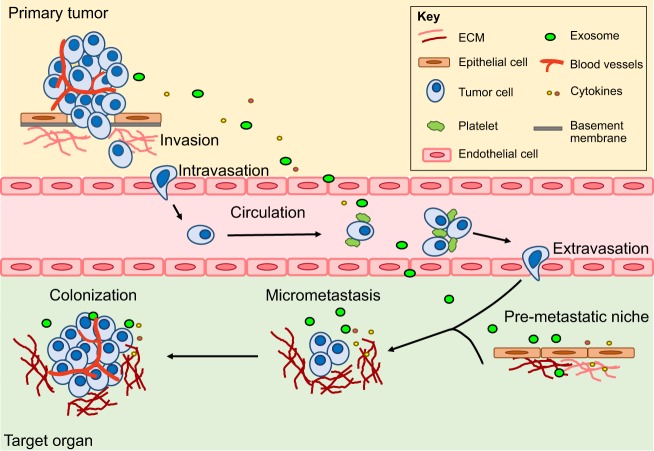Fig. 1.
Metastatic cascade. Metastasis is a multistep process. Initially, tumor cells migrate into adjacent tissues, referred to as local invasion. This involves breakdown of the basement membrane and invasion into the surrounding ECM. Intravasation then allows cells to enter the circulation. In blood vessels, CTCs exist as single cells or clusters, coated with platelets. They need to survive shear stress and evade clearance by the immune system to successfully reach distant organs. Tumor cells then attach to endothelial cells, which facilitates their extravasation. After settling in the metastatic target organ, tumor cells must survive in this foreign environment and establish micrometastases. These DTCs can remain dormant for many years before proliferating into large macrometastases in a process termed colonization. The primary site also regulates the development of metastasis via secretion of factors (such as cytokines and exosomes) that can prime a pre-metastatic niche (Box 2) and support survival of DTCs. See Glossary in Box 1 for an explanation of key terms.

